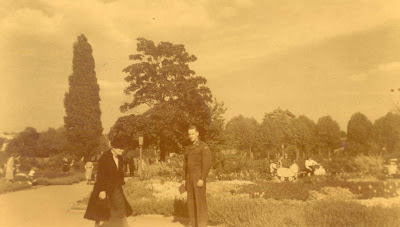Wednesday, July 4, 2012
At Home and On Occupation
There's a famous story. Douglas MacArthur, newly appointed military governor of Japan, arrives at his post, sees the devastation and sends a telegram to President Harry Truman: "Send food or send guns."
As we've found in the last decade, winning the war is one thing, winning the peace another. After World War 2, the United States, Great Britain, and France took an enlightened approach to winning the peace. First, there was the deNazification program. While the out right war criminals and major government figures found themselves in the dock, we decided that the minor officials, cultural figures, teachers, and members of the working classes, no matter how enthusiastic they were in their party activities, were dupes, and were allowed to go on with their lives. And then there was the Marshall Plan, America's commitment to rebuild Europe, no matter the cost. Any threat of a resistance movement ended, and our post war occupation went smoothly.
The occupation of Germany began right after the war. Germany was originally divided into four zones of occupation. The Soviet, British, French and American zones of occupation. In 1947, the British and American zones were merged, quickly followed by a merger with the French zone. In 1949, the first post war German government was formed, and the military governors were replaced with a Civilian High Commissioner. Technically, the Commissioner had governance powers and could over rule the new German parliament, but, by and large, the Germans were allowed to run their own affairs. On May 5, 1955, the occupation of Germany officially ended. There are still American military bases in Germany.
The first four pictures in the column are not labeled in any way, but appear to show our subject through his military training. The fifth photograph is labeled, "Camp Kilmer, N. J. April 1951." Camp Kilmer, named for the poet killed in World War 1, was never used as a training camp, but as a mustering point for troops being shipped from the port of New York to Europe. It opened in June 1942, and closed in the 1990s. Note that our subject is standing by a car with a Tennessee license plate. Could be coincidence, or could be his home state. The next picture, "Tompkins Barracks, April 1952, Swetzingen, Germany." This is a misspelling. Tompkins barracks is outside the town of Schwetzingen, and is scheduled to close in 2015. The color photo is labeled, Fike Park in Wiesbaden, Germany." It's also stamped, "THIS IS A KODACOLOR PRINT MADE BY EASTMAN KODAK COMPANY T.M. REGIS. U. S. PAT. OFF. Week of June 2, 1952." Was their a photo lab on base for the troops? Too, I think Fike Park might be mislabeled. I've run a search for public parks in Wiesbaden, and nothing by that name came up. And the last picture, "Wurzburg-Germany Bahnhof-train station. July 3, 1952." I wish there were some people's names listed. It's nice to have place names and dates, but being able to identify a person by name is always special.
I wonder what was going through the mind of this soldier. Was he living the great adventure of his life, using his leave time to explore Europe? Did he take trips to Paris, the Alps, Berlin, Basel, Switzerland? (Go back one post to see a ticket stub from the tramways of Basel sold to American service men on leave.) Did he learn German or French? Or did he stay close to base, home sick, just putting in time until the end of his service, and a ship's berth back home? I hope he saw it as an adventure and not a duty to be endured.
The American zone of occupation included Bavaria, Bremen, Hesse, and Wurtemberg-Baden.
Subscribe to:
Post Comments (Atom)








No comments:
Post a Comment